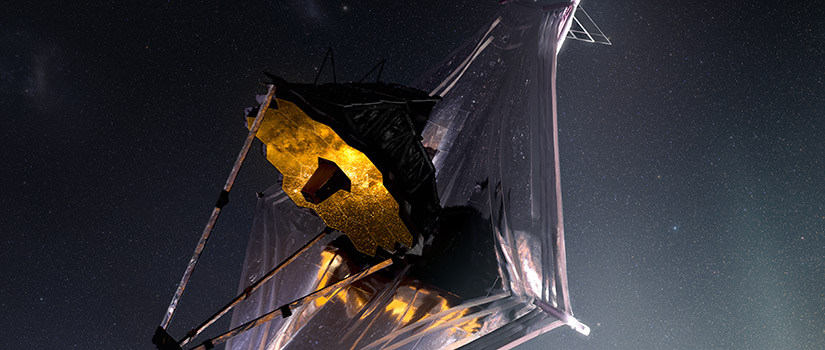When the James Webb Space Telescope is ready to record data throughout the universe, a University of South Carolina astronomer will be ready to read that data.
Varsha Kulkarni, a professor of physics and astronomy, is among the scientists who have been awarded research time on NASA’S new telescope, which launched on December 25. The long-awaited Webb telescope is larger and more powerful than the Hubble Space Telescope. It also includes more instruments focused on infrared measurement, Kulkarni says. It will record images and data that are beyond the reach of current instruments, giving an expanded view of the universe’s past, present and future.
Kulkarni’s project for the Webb telescope involves studying dust in distant star systems. Far from the ordinary ash swept into a waste bin, interstellar dust provides valuable information for astronomers. The grains of dust can become future stars and planets. They also can obscure the light from faraway objects, altering our picture of the universe.
“It can have a big effect on our perception of the universe and potentially on our understanding of how it’s expanding,” she says.
The data from the new telescope will allow Kulkarni and her research team to have a better idea of what interstellar dust is made of. Kulkarni says knowing more about the dust will help her team and other scientists answer two important questions: “How does this kind of dust affect the light of faraway galaxies, and what effect could it have on broader structure of the universe?”
The Webb space telescope traveled for about a month before going into orbit around the sun 1.5 million miles away from earth. It will start collecting data after a period of testing and focusing its equipment after which NASA will use it to gather data for research proposals like Kulkarni’s. Eventually, all of the collected data will be available to the public, making the stars—and the dust—of the universe available for future scientific research.
Photo credit: Artist conception of the James Webb Space Telescope. NASA GSFC/CIL/Adriana Manrique Gutierrez
